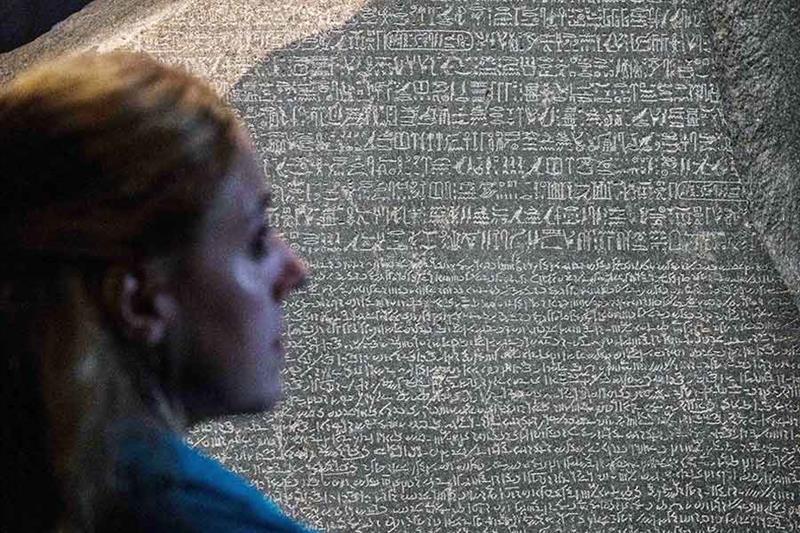
Calls for repatriating the Rosetta Stone, which remains at the British Museum, have crescendoed in the build-up to the 200th anniversary of its decipherment. The campaign to retrieve the stone was launched in September by Egyptologist and former antiquities minister Zahi Hawass, and it has found support among Egyptians from all walks of life.
Ancient Egyptian civilisation has always fascinated the world with its awe-inspiring monuments decorated with lavish paintings and hieroglyphic texts that have long captured the interest and attention of admirers, scholars, scientists and historians who in the past tried to decode their symbols but without success.
Then, 200 years ago in 1822 French scholar Jean-François Champollion was able to crack the hieroglyphic code from texts written on the Rosetta Stone, opening a window onto the secrets of ancient Egyptian history and its great civilisation.

Champollion was not the first to achieve such success, however, according to scholar Okasha Al-Dali of University College London’s Institute of Archaeology. He revealed in 2004 through an analysis of manuscripts that Arab scholars had correctly interpreted many hieroglyphic symbols in the ninth century, almost 1,000 years before Champollion.
An expert in both Egyptology and mediaeval Arab writers, Al-Dali began his investigation of Arab writing on ancient Egypt and revealed that the ninth-century alchemist Abu Bakr Ibn Wahshiya had managed to correctly decipher several hieroglyphic symbols and had identified the phonetic value and meaning of these symbols.
“By comparing Ibn Wahshiya’s conclusions with those in books on the Egyptian language, I was able to assess his accuracy in understanding hieroglyphic signs,” Al-Dali was quoted as saying in the UCL news online magazine in October 2004.
He added that “in particular I looked at the Egyptian Grammar of Sir Alan Gardiner, which has a sign list at the end. It revealed that Ibn Wahshiya had understood perfectly well the nature of Egyptian hieroglyphs.”
According to Al-Dali, the importance of Ibn Wahshiya’s work was noticed by A Kircher, the first European scholar to write a book on Egyptian Coptic grammar in the early 17th century.

The work of the 14th-century Iraqi alchemist Abu Al-Qasem Al-Iraqi was another milestone. His books are full of correctly copied ancient Egyptian texts and tables of the hieroglyphic alphabet with phonetic values.
A manuscript written by the Sufi Dhul-Nun Al-Misri, a scholar who lived in the Upper Egyptian city of Sohag at the beginning of the ninth century, when the majority of the city residents were still speaking Coptic, a descendent of the ancient Egyptian language, helped Champollion to decode the text engraved on the Rosetta Stone.
It would have been impossible for him to decode the hieroglyphics without knowing Coptic, which largely disappeared in the Middle Ages and has remained only to be used in Coptic churches.
According to Al-Dali, early mediaeval Arab scholars realised the relationship between the ancient Egyptian and Coptic languages and made major advances in what later became Egyptology.

In an article published in the Muslim Heritage online magazine surveying some results of Al-Dali’s research, the author said that “mediaeval Egyptian scholars who, fearing the lack of interest in learning Coptic on the part of the Christian Egyptian community, decided to write lessons on Coptic grammar in Arabic.”
“Kircher was able to produce the first Coptic grammar in Latin in the West through his use of more than 40 Arabic books brought from Egypt and listed in his own books, which shows how grateful he was for his Arabic sources.”
“Champollion then built his study on all these Arabic sources, and thus he arrived at a better understanding and decipherment of hieroglyphs.”
*A version of this article appears in print in the 13 October, 2022 edition of Al-Ahram Weekly.
Short link: